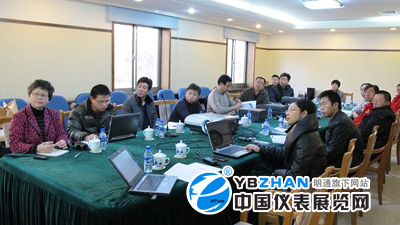 On December 15, 2010, the "Safety System Risk Assessment and Solution Study" project jointly conducted by the Functional Safety Center and PetroChina Tuha Oilfield Company passed the acceptance inspection at the Shanshan Tuha Oilfield Base in Xinjiang. The project acceptance team consisting of leaders of the Oilfield Production Operations Department, Equipment Management Department, Information Industry Department, Safety and Environmental Protection Department, Science and Technology Department and various engineering and technical personnel of the oilfields listens to project research reports, examines research data and seriously discusses Afterwards, they agreed to pass the acceptance test and gave acclaim. Shi Xueling, Deputy Chief Engineer, Meng Zouqing, Xiao Jiaxuan, and Xiong Wenze participated in the project research and acceptance activities of our functional safety center.
On December 15, 2010, the "Safety System Risk Assessment and Solution Study" project jointly conducted by the Functional Safety Center and PetroChina Tuha Oilfield Company passed the acceptance inspection at the Shanshan Tuha Oilfield Base in Xinjiang. The project acceptance team consisting of leaders of the Oilfield Production Operations Department, Equipment Management Department, Information Industry Department, Safety and Environmental Protection Department, Science and Technology Department and various engineering and technical personnel of the oilfields listens to project research reports, examines research data and seriously discusses Afterwards, they agreed to pass the acceptance test and gave acclaim. Shi Xueling, Deputy Chief Engineer, Meng Zouqing, Xiao Jiaxuan, and Xiong Wenze participated in the project research and acceptance activities of our functional safety center. In the research process of this project, a combination of quantitative modeling and semi-quantitative analysis was adopted, and methods such as failure mode and impact analysis (FMEA), reliability block diagram, and risk score table were integrated, and 6 oil production plants in the Tuha Oilfield were established. A total of 33 sets of main control systems (excluding duplicated systems) were used to calculate the operational risk quantitative analysis model and the semi-quantitative analysis evaluation model, which enabled the quantitative analysis of the availability of the in-service automatic control system and its performance, reliability, and task independence. Comprehensive assessment of six key factors that affect the smooth operation of the system, including performance, functionality, and external environmental conditions. Based on the evaluation results, solutions and suggestions for system updating and transformation were given from the aspects of hardware, structure, operation and maintenance, management, and staffing of the system.
The research results of the automatic control system operating risk analysis and evaluation model and "automated control risk assessment system" software for the domestic initiative, to fill the gaps in the country. The project results have laid a solid foundation for further periodic evaluation of oilfield automation systems and provided an effective means for risk prediction. For the discovery and prevention of factors that affect the smooth operation rate of the oilfield automation system, it is of great significance to establish corresponding preventive measures and response plans.